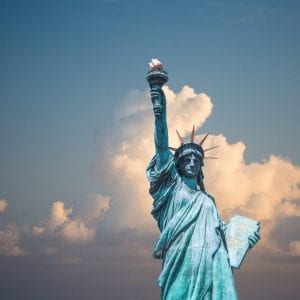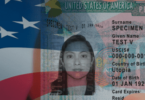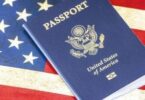This guide is a concise overview of the typical immigration process for people looking to migrate to the US. We would be focusing on the different types of visa issued by the US, the process to get them and a few other factors in relation to immigrating to the US.
The US visas
The United States of America has quite a number of visas, but there are two main categories of U.S visas: Non-immigrant for temporary visit such as tourism, business, work, visiting family or study and the second visa type is the Immigrant visa which is only issued for people to migrate and live in the U.S. We would be focusing on the most common visas available to some part of the African continent which are:
- B-1/B-2 visa
This visa is issued only to persons who intend to travel to the US temporarily for business, pleasure or for medical treatment.
- F-1 visa
This is the most common type of student visa issued by the US. If you wish to study in the United States in an approved school such as a US accredited college or university, or an English program, then you’ll need an F-1 visa.
- M-1 visa
This type of visa is only issued when you intend to engage in a non-academic or vocational study or training in a U.S institution.
- Work Visa
Under this category of visa, there are three main types of visas issued; they depict different skill set and are issued based on applicant’s knowledge in this field of occupation of which they apply for the visa. First in this list is;
- H-1B (specialty occupation)
This visa is required when you are going to perform a service in a prearranged professional job. To qualify for this visa, you must possess a bachelor’s degree or higher in the stated field of which you are seeking employment.
- H-2A (seasonal agricultural workers)
This type of visa allows U.S employers to bring foreign nationals to fill temporary agricultural jobs which U.S workers are not available for. This visa only applies to you when you seek to perform agricultural labor or services temporarily or seasonally in the U.S.
- H-2B (skilled and unskilled workers)
This visa is required to enter the U.S to perform a job for which there is shortage of U.S workers. This is by far one of the easiest and most applied for visa, but it is only issued for temporary stay and work in the U.S.
- H-3 visa
You can apply for this visa if you are going to receive training from an employer in the U.S in any field of endeavor other than graduate education or training and its usually issued for a period of up to two years.
- H-4 visa
If you are a principal holder of a valid H visa, your spouse or children (under the age of 21) may be issued this visa type so as to enable them accompany you to the U.S but they would not be allowed to work.
L-1 visa
This visa is issued if you work for an international company and the company is temporarily transferring you to a parent branch, affiliate or subsidiary of the same company in the U.S.
- L-2 visa
If you are a valid holder of the L-1 visa, your spouse or unmarried children under the age of 21 may receive this derivative visa. Due to a change in law, your spouse may be allowed to seek for employment authorization.
- O visa
This visa is issued to people with extraordinary abilities in science, arts, education, business or athletics. An O-2 visa is given to those assisting in the artistic or athletic performance, while an O-3 visa is issued to child or spouse of O-1 or O-2.
- P visa
Type P visas are issued to certain athletes, entertainers, artists and essential support personnel who are coming to perform in the United States.
- Q visa
A Q visa is required if you are traveling to the United States to participate in an international cultural exchange program for the purpose of providing practical training, employment, and the sharing of the history, culture, and traditions of your home country.
- R visa
The R visa is for individuals seeking to enter the United States to work in a religious capacity on a temporary basis with the support of a petition.
Applying for Asylum
Applying for asylum in the U.S is completely different from applying for a regular visa hence it takes more time to process. On the average, applying for asylum takes around 6 months or more; It is a very selective and rigorous process, but with the right legal counsel and for the right reason, you can be eligible.
Applying for asylum in the U.S means you have to carefully understand the facts about applying for asylum; note that only persons who are already in the U.S and fear that their life may be in danger if they return to their home country can apply for asylum. One may be able to get asylum in the U.S if request is filed before one year of stay in country or at point of entry into the United States but if one exceeds a year in the U.S before filing for asylum; he or she would be deemed ineligible. When filing for asylum under persecution, persecution should be under one of these criteria’s:
- Race
- Religion
- Nationality
- Social Group
- Political Opinion
From a legal standpoint, this includes threats of violence, the denial of human rights and freedoms and unjust imprisonment. The most effective way to seek for asylum in the United States is to enlist the help of an immigration lawyer.
If you receive refugee status in the United States, your children and spouse can also be granted asylum status as your derivatives.
If your family is already in the United States with you, you can simply include their names on your application forms. If they are outside of the United States, you will have to apply for them separately so they can join you.
Family based visa
There are two major types to family-based visa in the United States; they are:
- Immediate Relative Immigrant Visas (Unlimited)
These visa types are based on a close family relationship with a U.S citizen described as an Immediate Relative (IR). Immediate Relative visa types include:
- IR-1: This visa is issued if you are a spouse of a US citizen.
- IR-2: This visa is issued to children of US citizens under the age of 21
- IR-3: This visa is issued to an orphan adopted abroad by a US citizen.
- IR-4: This is issued to an orphan to be adopted in the US by a US citizen.
- IR-5: This visa is issued to a parent of a US citizen that is at least 21 years old.
- Family Preference Immigrant Visas (Limited)
This visa type is for specific, more distant, family relationships with U.S citizen described as an Immediate Relative. Its categories are:
- Family First Preference (F1): This is issued to unmarried sons and daughters of U.S citizens and their minor children.
- Family Second Preference (F2): This visa type is for spouses, minor children and unmarried sons and daughters, 21 years and above of lawful permanent residents.
- Family Third Preference (F3): This visa is issued to married sons and daughters of U.S citizens and their spouses and minor children.
- Family Fourth Preference (F4): This visa is issued to brothers and sisters of U.S citizens and their spouses and minor children, provided the U.S citizens are at least 21 years of age.
Family Visa for Green Card Holders
As a green holder or a permanent resident in the United States, you may petition for certain family members to immigrate to the US as permanent residents also. Although, this only applies to certain members of the green card holder’s family which includes spouse (husband or wife), unmarried children under 21 years of age and unmarried son or daughter of any age.
Preferences are given to these visa types and visas are made available according to preference priority date, but immediate relatives like spouse, children and parents can get visa without worrying about visa availability period although there will be a wait of many months.
Students visa and challenges of studying in the US
The United States is open to receive international students into its academic institutions, but this must be done only by applying for the right kind of visa. There are two major students visas available: the F-1 visa and the M-1 visa. The type of studies you choose to go for would determine the kind of visa applicants should apply for.
For students who are applying to study in a US university, college, high school, seminary or even a language training program can apply for the F-1 visa category. While applicants seeking to go for a vocational training program or at an unrecognized institution would apply for the M-1 visa category.
Studying in the US: Challenges
The US, because its houses some of the world’s greatest university, has a high rate of applicants who apply to be admitted into its academic system. After been accepted, these students face some challenges and some of these challenges includes
- Mastering the common language which is English
- Battling homesickness
- Change in their cultural background
- Change in diet and food kinds
- Getting used to the climate
- The cost of education more for non-US citizens
- Restricted work time to 20 hours weekly and on campus, thereby reducing the chances of students been able to earn more to support tuition.
- Financial crux, to mention but a few.
These challenges have been shown to be the major deterrent for immigrants who intend to study in the US.
Diversity Lottery Visa
The diversity lottery visa is a program also know as the green card lottery was introduced by the United States government in the year 1986 to help diversify the immigrant population in the US. The lottery is administered by the US Department of State and conducted under the Immigration and Nationality Act and makes available 50,000 immigrant visas available to its proposed applicants.
To enter for this lottery, one must be born in an eligible country if selected to qualify for this visa as well as some educational qualification or a skilled labor qualification. Although each year the department publishes new instructions for its applicants. The visa lottery program is distributed among six regions which includes Africa, Asia, Europe, Latin America, North America and Oceania.
In these eligible regions, some countries have been deemed ineligible to apply for the visa lottery for a time due to the fact that in the last 5 years of the program, they have sent more than 50,000 immigrants into the US. From current research, the only African country currently ineligible for the Diversity Lottery Visa is Nigeria.
President Trump, who is more in favor of a new merit-based Green Card program is pushing to end the diversity lottery visa. Whether the Congress will eventually pass Trump’s aggressive immigration bill remains to be seen.
Immigrant Friendly States in the US
California, described as a sanctuary state has been ranked to be the most immigrant friendly state in the United States. Because of its large investment in agriculture, it relies so much on immigrants to carry out labor. The state has even gone so far as to allowing illegal immigrants obtain drivers licenses and have sanctuary cities and counties. It is estimated that 6% of the California population are undocumented immigrants. Although it’s an expensive place to live in, the California state senate passed a bill that provides greater legal protection for its immigrants.
Source: US Department of States
Patrick Eronmwonse Ogbekhilu
Afrikagora Magazine









